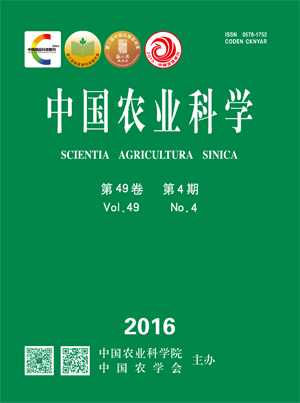-
Diagnosis of the Ascosphaera apis by the Loop-Mediated Isothermal Amplification
- XI Wei-jun, LI Jiang-hong, CHEN Da-fu, LIANG Qin
-
Scientia Agricultura Sinica. 2016, 49(4):
765-774.
doi:10.3864/j.issn.0578-1752.2016.04.015
-
 Abstract
(
547 )
Abstract
(
547 )
 HTML
(
2 )
HTML
(
2 )
 PDF (1619KB)
(
663
)
PDF (1619KB)
(
663
)
 Save
Save
-
References |
Related Articles |
Metrics
【Objective】 The objective of this study is to establish a rapid and sensitive method for detecting the Ascosphaera apis in epidemiological investigations by the loop-mediated isothermal amplification (LAMP), and to provide technical supports for monitoring and prevention of chalkbrood in honeybee.【Method】Four specific primers were designed based on the particular sequence of ITS of the A. apis using the software of PrimerExplorer V4.0 online. The primers included A. apis-F3 (5′-ACATTGC GCCCTCTGGTA-3′), A. apis-B3 (5′-TGGTTAGACCGGACAGTCG-3′), A. apis-FIP (5′-TAAGACGGGACGATCGCCCAACC TGTCCGAGCGTCATTG-3′) and A. apis-BIP (5′-GAAAGGCAGTGACGGCGTCGGGCCACTAGAGCGAAAGAC-3′). LAMP were performed under different concentrations such as Mg2+ (0, 2, 4, 6, 8, 10, 12, and 14 mmol·L-1), dNPTs (0, 0.2, 0.4, 0.6, 0.8, 1.0, 1.2, 1.4, 1.6, and 1.8 mmol?L-1), FIB/BIF (0.2, 0.4, 0.6, 0.8, 1.0, 1.2, 1.4, 1.6, and 1.8 mmol·L-1), betaine (0, 0.2, 0.4, 0.6, 0.8, 1.0, and 1.2 mol?L-1), reaction temperatures (58, 60, 63, and 65℃) and reaction times (30, 40, 50, and 60 min), respectively. The LAMP result was determined by both the turbidimeter and agarose gel electrophoresis in order to optimize the reaction conditions. The specificity of LAMP was tested by using genomic DNA of Nosema ceranae, Nosema apis, Deformed wing virus (DWV), Sacbrood virus (SBV), Black queen cell virus (BQCV) and Israel acute paralysis virus (IAPV). In addition, the LAMP amplified products were digested with PvuⅠrestriction enzyme. The sensitivity of LAMP was compared with normal PCR by employing ten-fold serially diluted DNA templates of A. apis (including 0.2231, 0.2231×10-1, 0.2231×10-2, 0.2231×10-3, 0.2231×10-4, 0.2231×10-5, 0.2231×10-6, 0. 2231×10-7, and 0.2231×10-8 μg·μL-1). The practical reliability was achieved in clinical trials.【Result】A rapid and specific method for detction of A. apis was established. The optimum conditions for LAMP reaction were as follows: 4 mmol·L-1 Mg2+, 1.2 mmol·L-1 dNTPs, 1.6 mmol·L-1 FIP/BIP, 0.4 mol·L-1 betaine, and the method was performed at 63℃ for 60 min. The templates of A. apis, N. ceranae, N. apis, DWV, SBV, BQCV and IAPV were tested, the result showed that only the A. apis DNA template could produce typical ladder-like bands. The sensitivity test showed that the PCR could detect the DNA templates as low as 0.2231×10-5 μg·μL-1. While the LAMP could detect ten times lower DNA templates of 0.2231×10-6 μg·μL-1. The LAMP is effective, simple and time saving for detecting the A. apis infect honeybee. 【Conclusion】The method of LAMP was proved to be a precise, faster, lower cost in diagnosis of chalkbrood in honeybee. It also could be applied in both research institutions and field.









